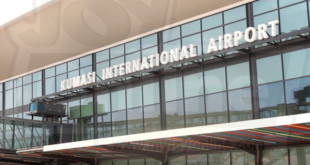Statistics South Africa has published its latest data on government spending, and the key sectors where taxpayer money is used.
The data shows that government spending flirted with the R2 trillion mark in the 2019/20 financial year, representing a 10% rise from the R1.79 trillion recorded in 2018/19.
‘General government’ includes all national and provincial government departments, municipalities, extra-budgetary accounts and funds, and higher education institutions.
When looking at the spend as a R100 total, the biggest expenses are as follows:
- R24 on general public services – including R10 on debt payments and R10 on executive and legislative services;
- R20 on education – including R6 on primary school and R6 on universities and other tertiary schooling;
- R15 on social protection – including R5 on grants and other spending for the elderly, and R4 for families and children;
- R11 on health – including R7 on hospital spending;
- R11 on economic affairs – including R3 on roads;
- R9 on public order – including R6 on policing and R1 on prisons;
- R9 on miscellaneous and other expenses – including R4 on housing.
The data shows that Eskom, social grants and debt payments were the biggest cost drivers in 2019/20.
The government spent an additional R182.8 billion in 2019/20 compared with 2018/19. The matrix below breaks this down and provides a snapshot of what drove spending higher (in red) and what the government spent less money on (in blue).
Economic affairs were the most significant factor that pushed overall government spending higher in 2019/20. National government expenditure on economic affairs jumped by R49.7 billion. A large capital transfer from the Department of Public Enterprises to Eskom was a significant contributor to this rise.
General public services under the national government increased by R25.4 billion. This was mainly due to a rise in interest payments on public debt (up by R22.9 billion or 12.6%).
The provincial government increased spending on education by R16.5 billion, driven largely by spending on educational services by Gauteng and KwaZulu-Natal.
The Water Trading Entity recorded a decline in operating expenditure in 2019/20, contributing to the R2.2 billion decrease listed under extra-budgetary accounts and funds (housing and community amenities).
 Home Of Ghana News Ghana News, Entertainment And More
Home Of Ghana News Ghana News, Entertainment And More







